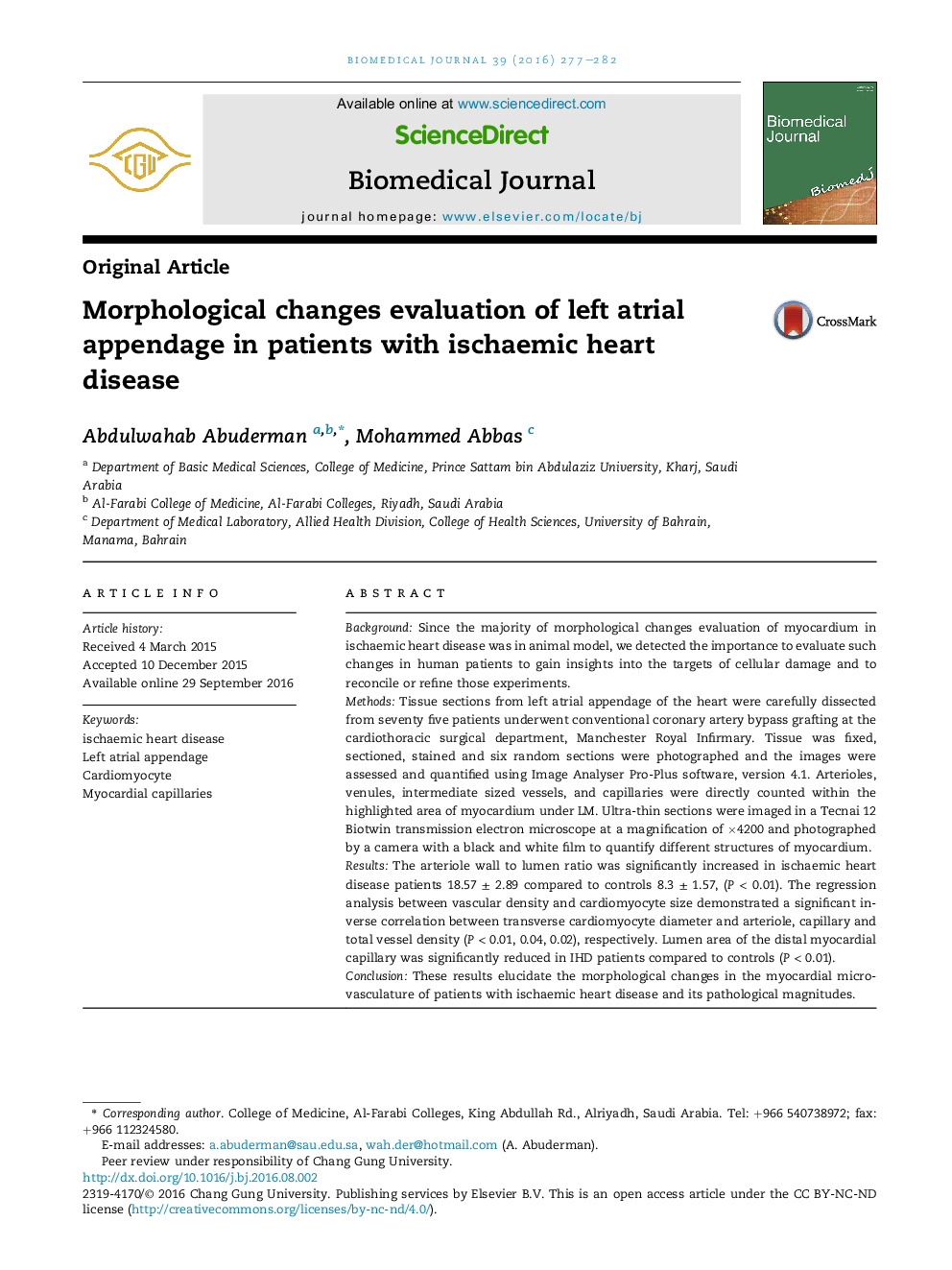| کد مقاله | کد نشریه | سال انتشار | مقاله انگلیسی | نسخه تمام متن |
|---|---|---|---|---|
| 5524610 | 1401423 | 2016 | 6 صفحه PDF | دانلود رایگان |
BackgroundSince the majority of morphological changes evaluation of myocardium in ischaemic heart disease was in animal model, we detected the importance to evaluate such changes in human patients to gain insights into the targets of cellular damage and to reconcile or refine those experiments.MethodsTissue sections from left atrial appendage of the heart were carefully dissected from seventy five patients underwent conventional coronary artery bypass grafting at the cardiothoracic surgical department, Manchester Royal Infirmary. Tissue was fixed, sectioned, stained and six random sections were photographed and the images were assessed and quantified using Image Analyser Pro-Plus software, version 4.1. Arterioles, venules, intermediate sized vessels, and capillaries were directly counted within the highlighted area of myocardium under LM. Ultra-thin sections were imaged in a Tecnai 12 Biotwin transmission electron microscope at a magnification of Ã4200 and photographed by a camera with a black and white film to quantify different structures of myocardium.ResultsThe arteriole wall to lumen ratio was significantly increased in ischaemic heart disease patients 18.57 ± 2.89 compared to controls 8.3 ± 1.57, (P < 0.01). The regression analysis between vascular density and cardiomyocyte size demonstrated a significant inverse correlation between transverse cardiomyocyte diameter and arteriole, capillary and total vessel density (P < 0.01, 0.04, 0.02), respectively. Lumen area of the distal myocardial capillary was significantly reduced in IHD patients compared to controls (P < 0.01).ConclusionThese results elucidate the morphological changes in the myocardial microvasculature of patients with ischaemic heart disease and its pathological magnitudes.
Journal: Biomedical Journal - Volume 39, Issue 4, August 2016, Pages 277-282
